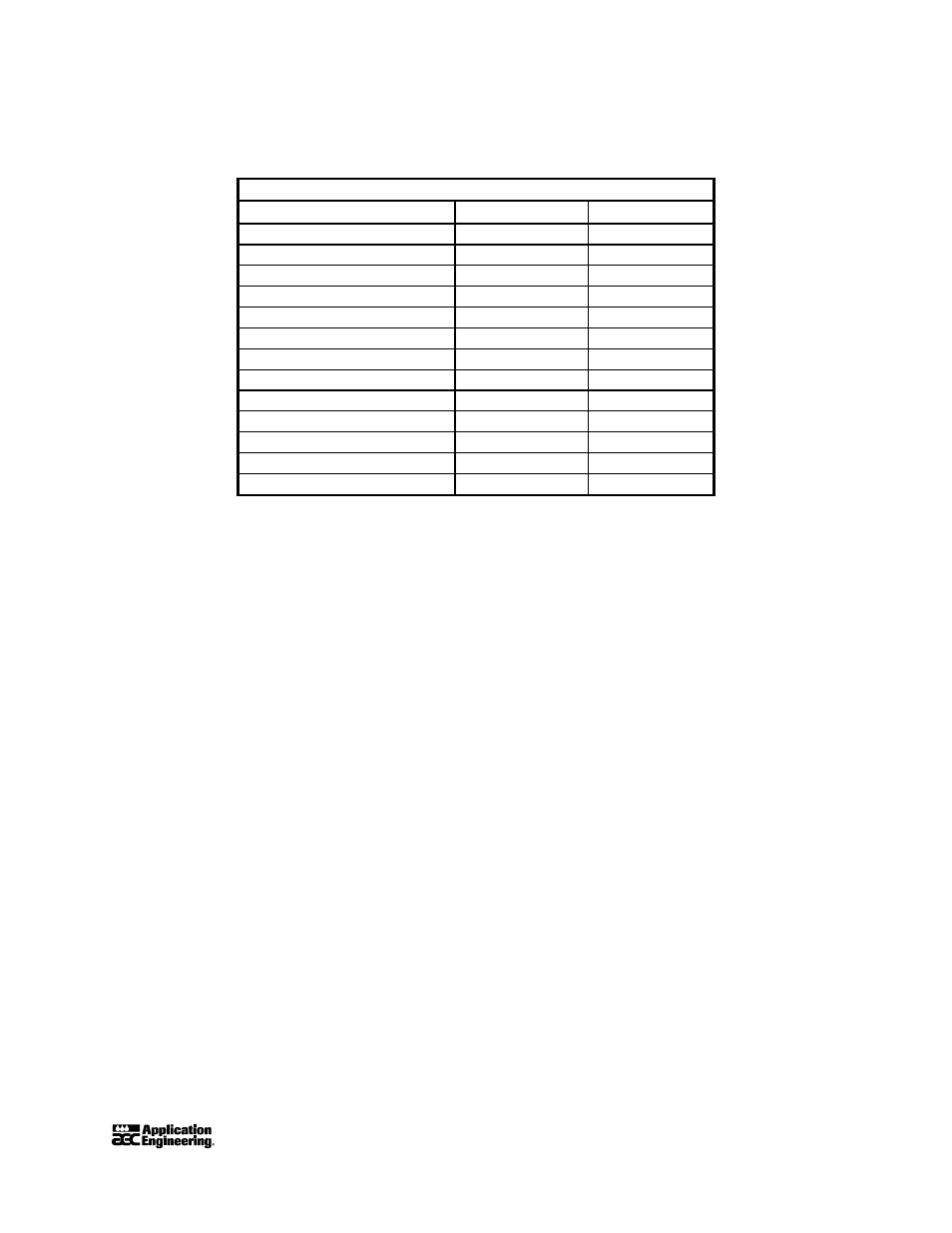8 the refrigerant charge – AEC ACOA Series Air-Cooled Central Chillers User Manual
Page 48

If a component other than those listed fails, the compressor requires replacement. Return the
compressor to your local Copeland distributor for replacement.
Compressor bolt torque values
Component
ft.-lbs.
N•m
Bottom plate
33 ft.-lb.
45 N•m
Housing cover
33 ft.-lb.
45 N•m
Oil pump to housing cover
23 ft.-lb.
29 N•m
Cylinder head
42 to 50 ft.-lbs.
57 to 68 N•m
Oil screen cover
50 ft.-lb.
68 N•m
Crankcase heater plug
38 ft.-lb.
52 N•m
Discharge valve
42 ft.-lb.
57 N•m
Suction valve -
1
/
2
”
42 ft.-lb.
57 N•m
Suction valve:
5
/
8
”
80 ft.-lb.
109 N•m
Capacity control valve
42 ft.-lb.
48 N•m
Pipe plug,
1
/
4
”
23 ft.-lb.
32 N•m
Pipe plug,
1
/
8
”
17 ft.-lb.
23 N•m
Oil sight glass
3 ft.-lb.
4 N•m
To convert inches to millimeters, multiply by 25.4. If
applicable, customer is responsible to convert to
metric.
7-8 The Refrigerant Charge
All ACOA central chiller units are given a complete charge of refrigerant at the factory. The type
and amount of refrigerant required is in Figure 1 on Page 9. The total refrigerant listed is for the
entire system. Since these units have separate circuits, each circuit should be considered
separately for charging.
To check for proper refrigerant charge, look in each liquid line sight glass with the aid of a
flashlight during system operation. At all operating conditions, the sight glass should be clear. If
bubbles are visible at any operating condition, the circuit is short of charge or there may be a
restriction.
Be careful not to overcharge the chiller. Overcharging results in considerable liquid logging in
the condenser and excessive condensing pressure. Only a trained technician familiar with
refrigeration should perform this task.
To add refrigerant, connect a refrigerant vessel to the ¼” backseating port of the suction valve.
Purge the air from the tube with refrigerant gas before connecting. With the unit running, open
the refrigerant vessel vapor connection slightly. Refrigerant more readily flows from the vessel
into the unit if the refrigerant vessel is warmer than the cooler.
ACOA Series Air-Cooled Central Chillers
Page 47
